Concrete flooring — types, costs, and design advice
Discover how to choose concrete flooring with our guide
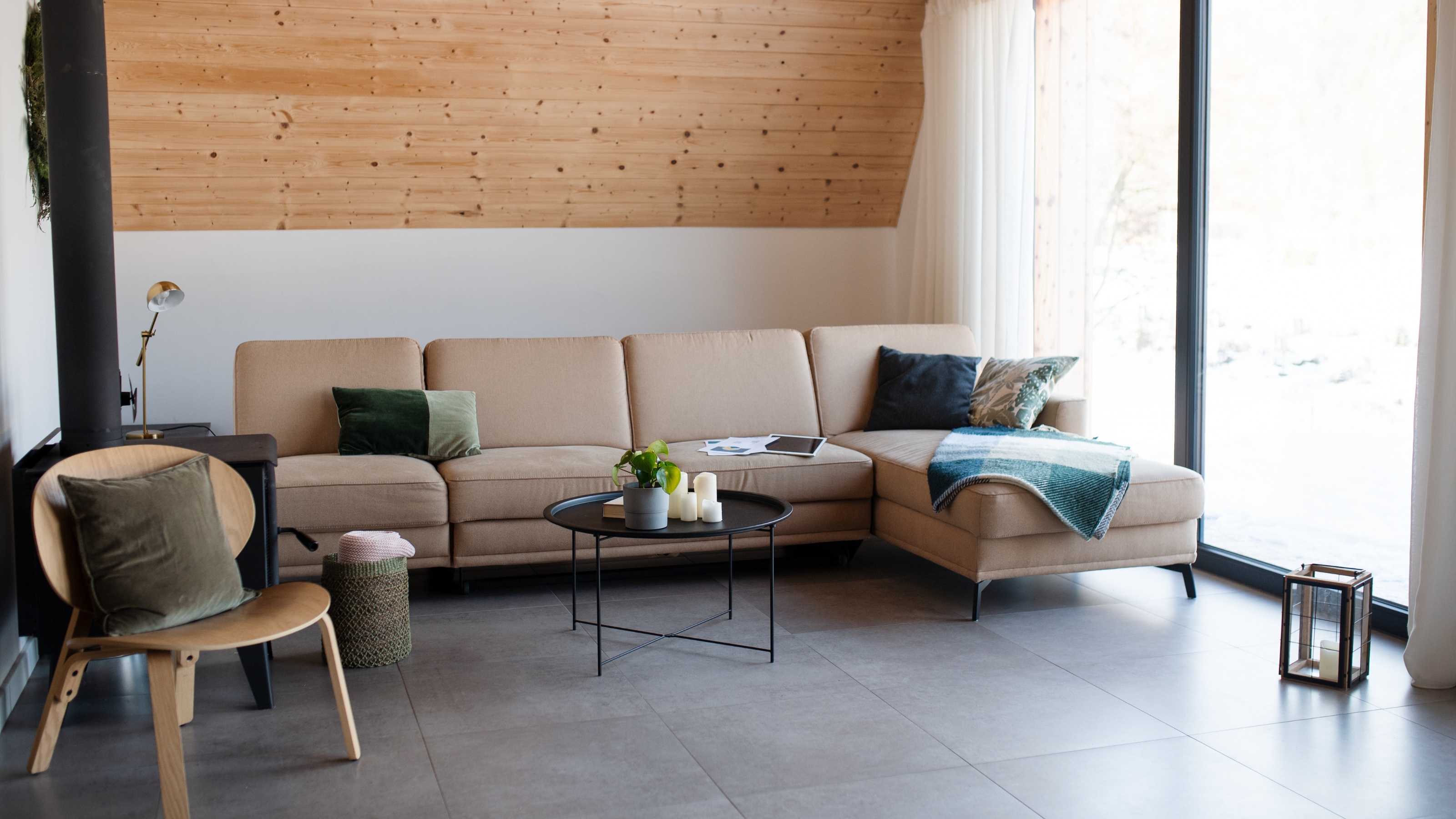
Concrete flooring is becoming more mainstream as part of both contemporary and traditional home design. With years of interior design knowledge under our belts, the Real Homes team breaks down everything we love about this versatile material.
Durable, elegant, and sleek, concrete is often successfully used in kitchens and bathrooms to create an ultra-modern look, but it can also be laid in bedrooms or living rooms for an unusual effect. A concrete floor also has practical advantages: it's easy to clean, hardwearing, and looks even better as it ages.
See the best concrete floor types, the pros and cons of concrete, how it stacks up against other popular flooring types, and the cost of choosing concrete for your home.
If you're still deciding on your flooring material, you might find our guide to how to choose the best flooring for kitchens and how to choose the best bathroom flooring, helpful reads.
Everything you need to know about concrete flooring
Most polished concrete flooring today is made from a cement-based coating with added polymers, and applied as a ‘screed’ by hand, rather than being poured like a resin.
Architectural in appearance, concrete is ideal for creating an industrial look and can also usually be laid on existing substrates, including existing tiles, as long as there is suitable stability, and that it is free of movement and moisture.
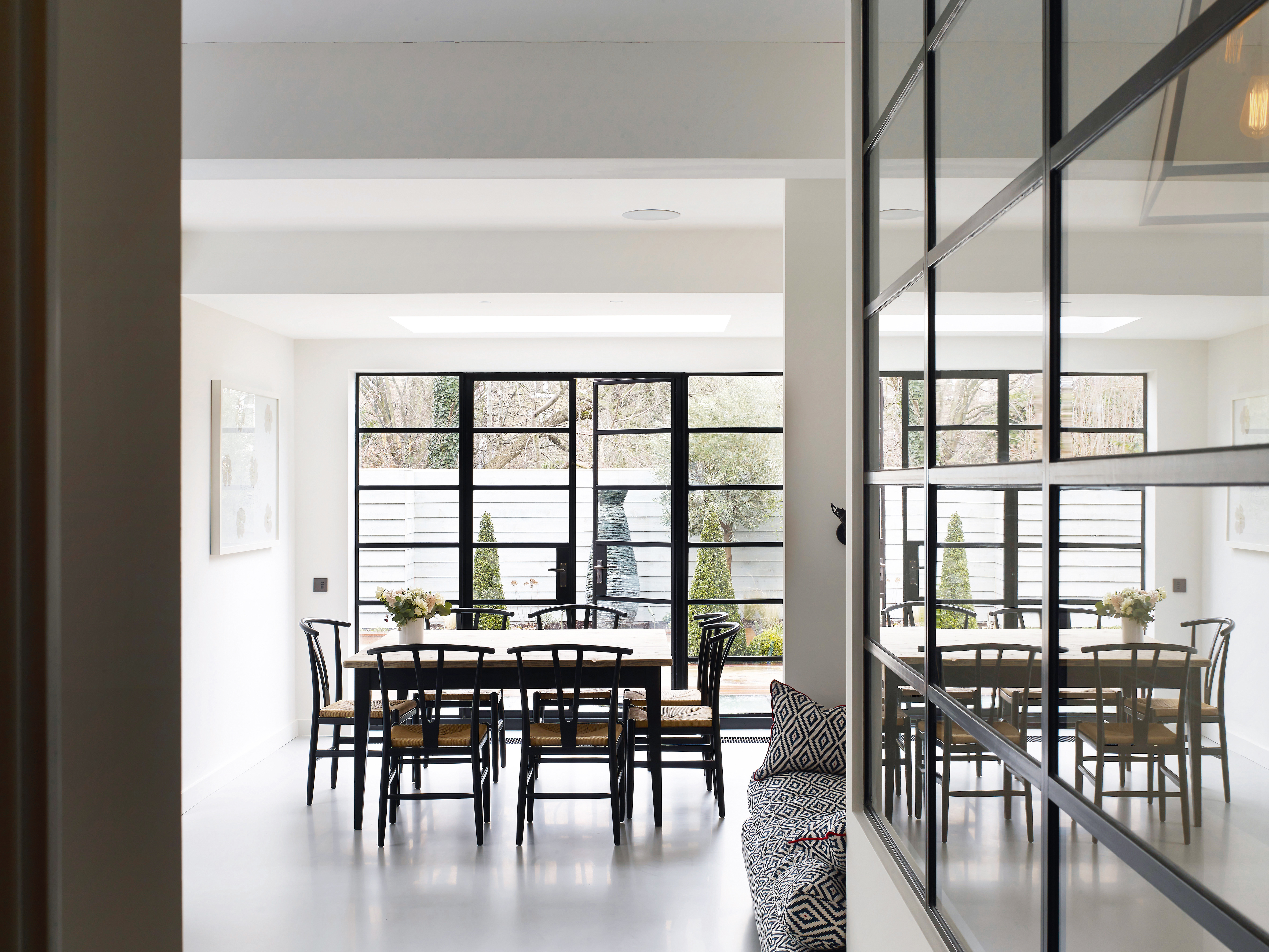
Concrete can be laid with underfloor heating, and can be used for a continuous, wall-to-floor finish. Concrete doesn't have to look brutalist, either: for a softer, more glamorous look, choose concrete with a glossy, polished finish, and it will look more like stone tile.
Get small space home decor ideas, celeb inspiration, DIY tips and more, straight to your inbox!
Concrete flooring generally has a more natural appearance than resin and often comes in a choice of finishes — from smooth and polished to pitted, rugged, brushed and raked, as well as with travertine and stone effects.
How much does concrete flooring cost?
The cost of a poured floor is highly dependent on the work involved and the size of the room, so it is usually calculated on a case-by-case basis. The larger the room, the cheaper each square metre will cost, which is one of the reasons a poured concrete floor is suitable for open-plan areas. If a substrate or structural layer needs to be applied to the ground before the flooring is poured, this will increase the cost of installation.
Find our more about creating an open-plan layout in an old home.
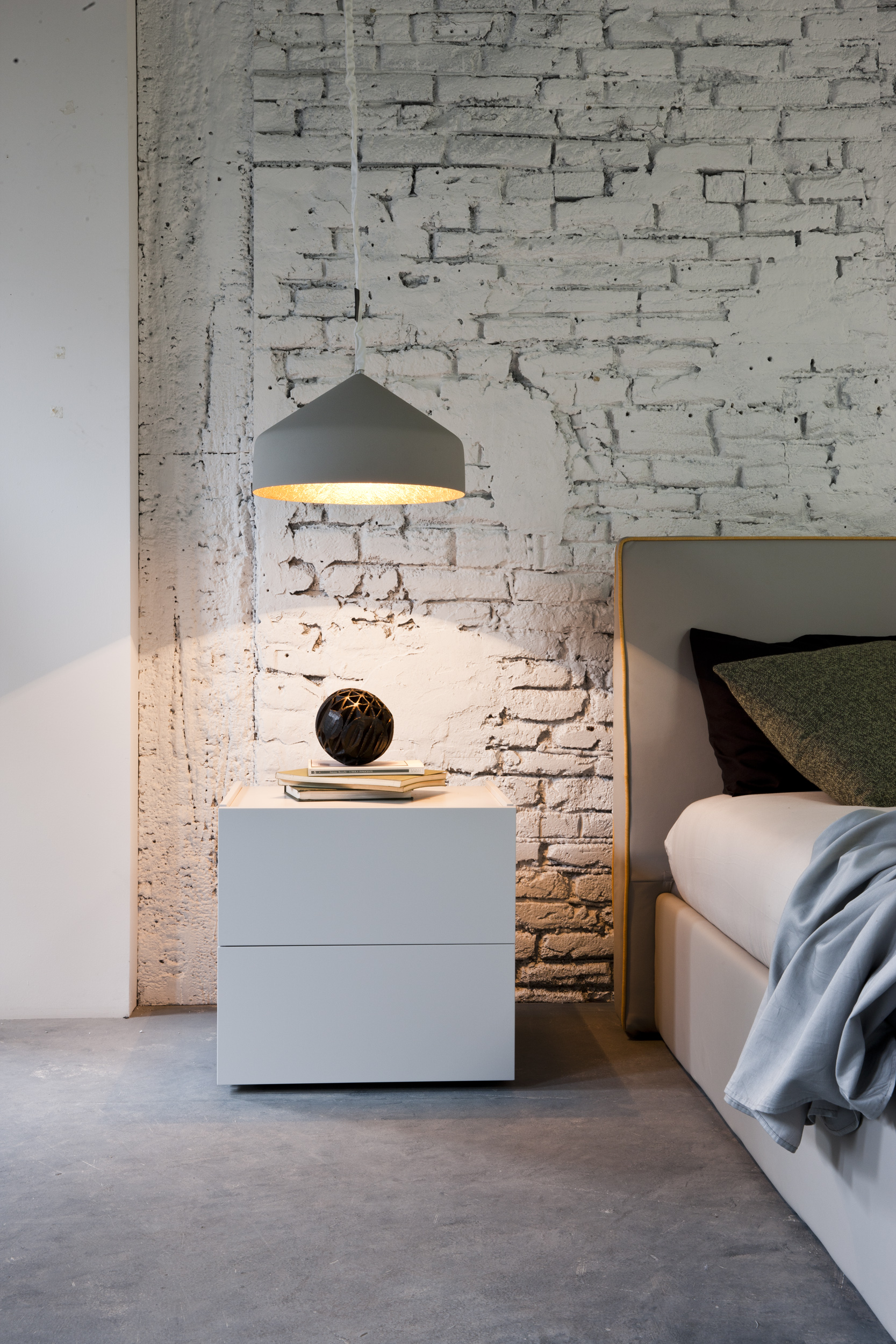
There are many finishes, polishes, seals, and coatings that can be applied to a concrete floor to achieve a specific finish. The more specialized your choice, the higher the cost.
The broad quote given by most concrete flooring companies is upwards of $125/square meter (£100), with the average cost being $165/square meter (£130).
Types of concrete flooring
Confused by what the term ‘concrete flooring’ actually refers to? There are three options:
1. Poured concrete flooring is the most expensive option. Suitable for large, open-plan ground floor areas, or as an outdoor-indoor option.
2. Concrete tile is more versatile than poured concrete and can be laid in virtually every room onto a cement mix base. Ask your local builder for these.
3. Concrete-effect tile is typically made from tough porcelain and is cheaper than real concrete. Lots of suppliers and finishes to choose from. Suitable for experienced DIY laying.

Concrete floor tiles are a cheaper alternative to poured concrete and are, in some cases, more practical. If you need to lift the flooring to fix underfloor heating or if a section of flooring is damaged, it is far easier to take up individual tiles, than to remove a section of poured flooring.
Tiles will have to be sealed and finished in the same way as a poured concrete floor, but it is a job you can easily do yourself. Concrete sealant is readily available from DIY warehouses and it is possible to buy, or even rent, a floor polisher for far less than you would pay a professional to do it for you.
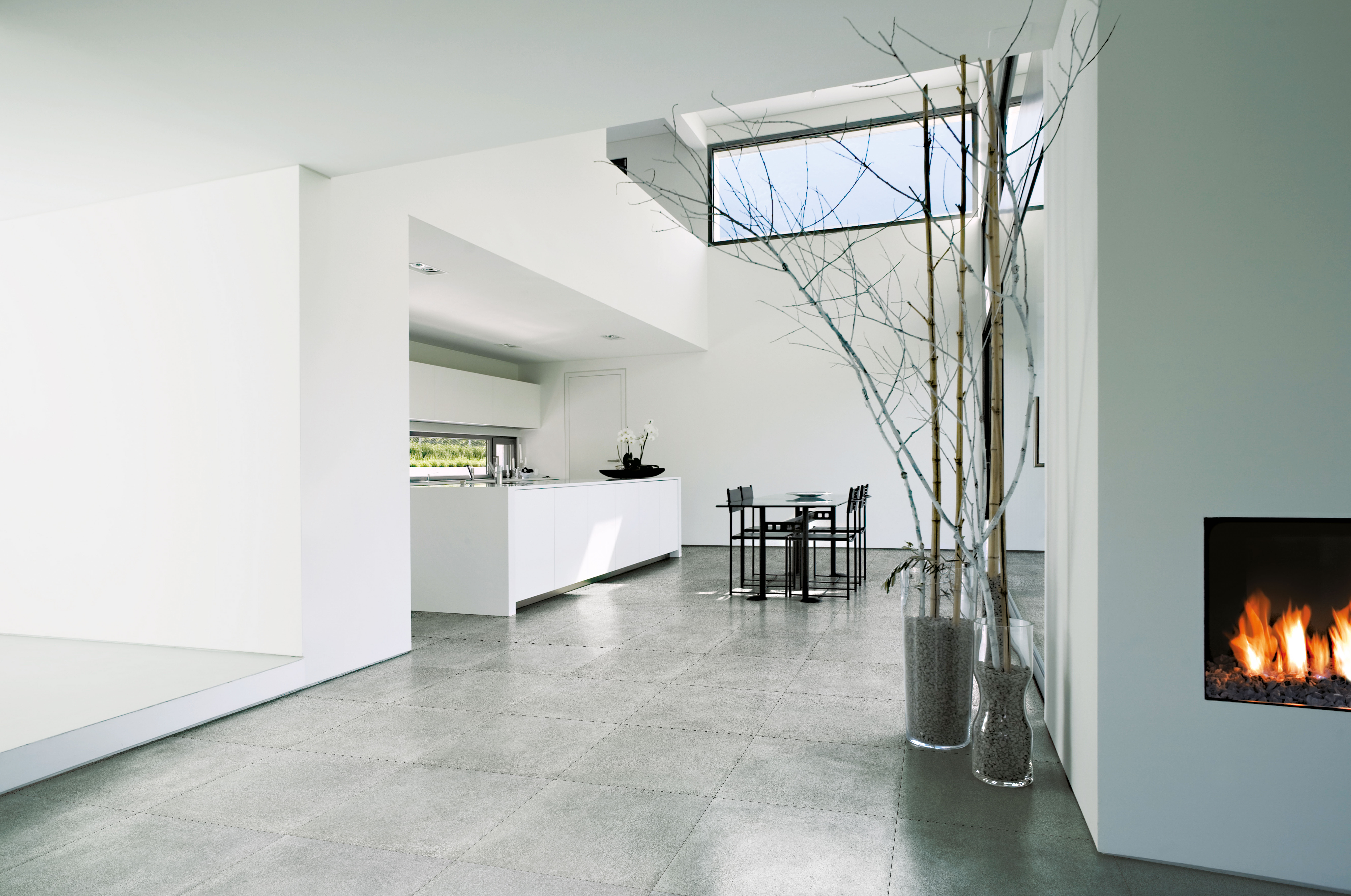
Concrete effect porcelain tiles, The Baked Tile Company
Want the look of concrete flooring without the price tag? Concrete effect tiles are usually made from hardwearing porcelain. Many can be used both inside and out, too.
Find out how to choose the best porcelain and ceramic floor tiles in our specialist guide.
Where to use concrete flooring
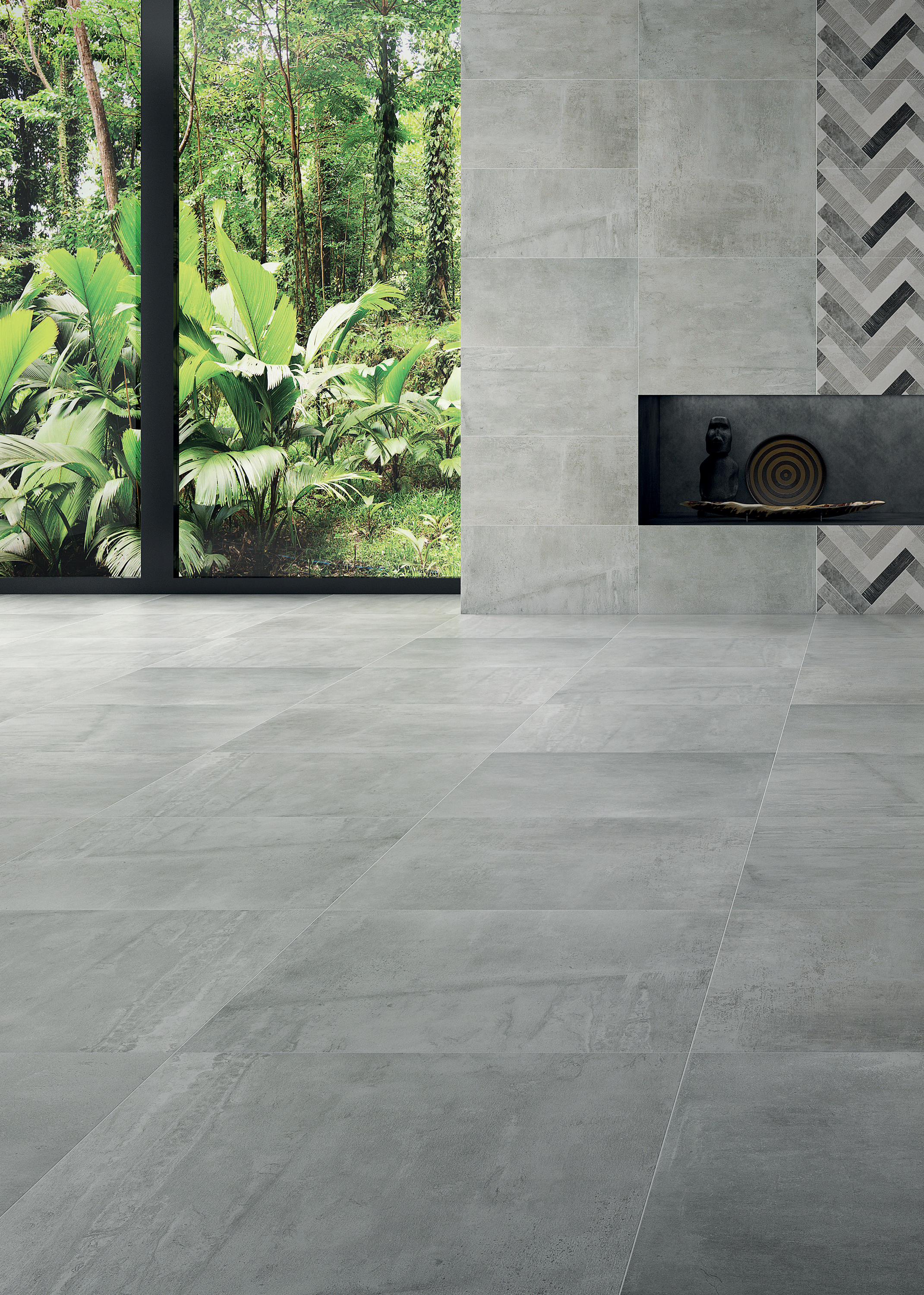
Concrete floors were originally designed for the commercial sector due to their hardwearing, hygienic and low maintenance properties. And you can use a concrete for flooring in just about any room in the house, assuming the sub-floor is properly prepared and designed to take the weight. The variation of colours and textures make it suitable style-wise any home, even period conversions.
Kitchen flooring
The glossy finish of a pale-coloured, polished concrete floor will reflect lots of light, so including it in a kitchen extension with tons of glazing will create a naturally bright room.
Polished concrete in particular is the flooring option of choice for those looking to create an industrial style kitchen. With the correct seal, they are waterproof, stain resistant and anti-slip, so are perfect for use in the kitchen or the bathroom.
Garden flooring
Poured floorings like concrete are seamless, and lend themselves to the continuous look of an indoor-outdoor connection because they can just as easily be used inside as out.
How to install concrete flooring
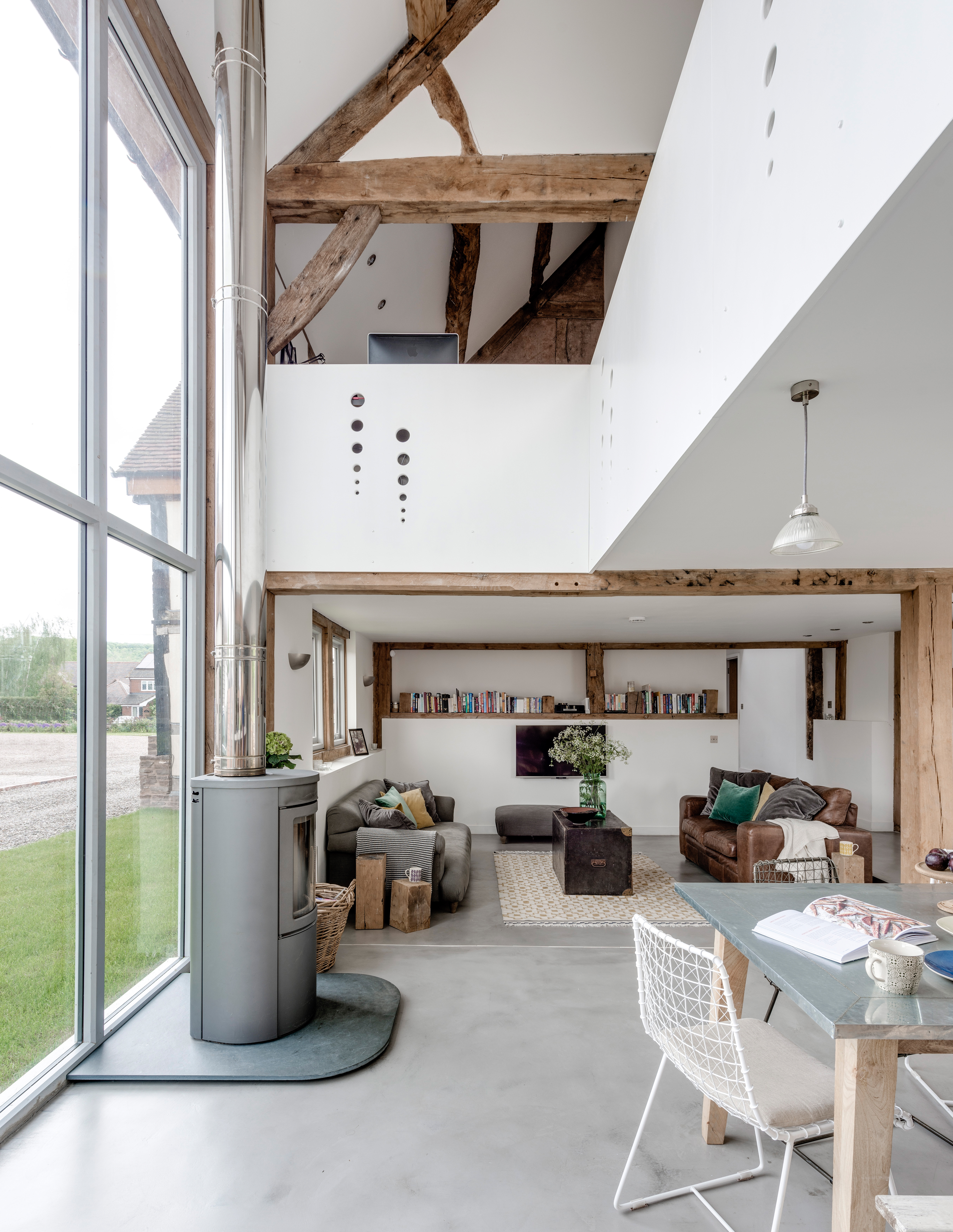
Poured concrete flooring comes as a supply-and-fit product and can only be laid by a professional; it should also come with a warranty or guarantee.
If you opt for cost effective concrete flags, you can either pay a professional to do the job, or with enough time and a bit of patience, you can DIY it. Similarly, you could employ someone to finish the floor for you, but again this is a job that you can successfully complete yourself.
How to clean concrete flooring
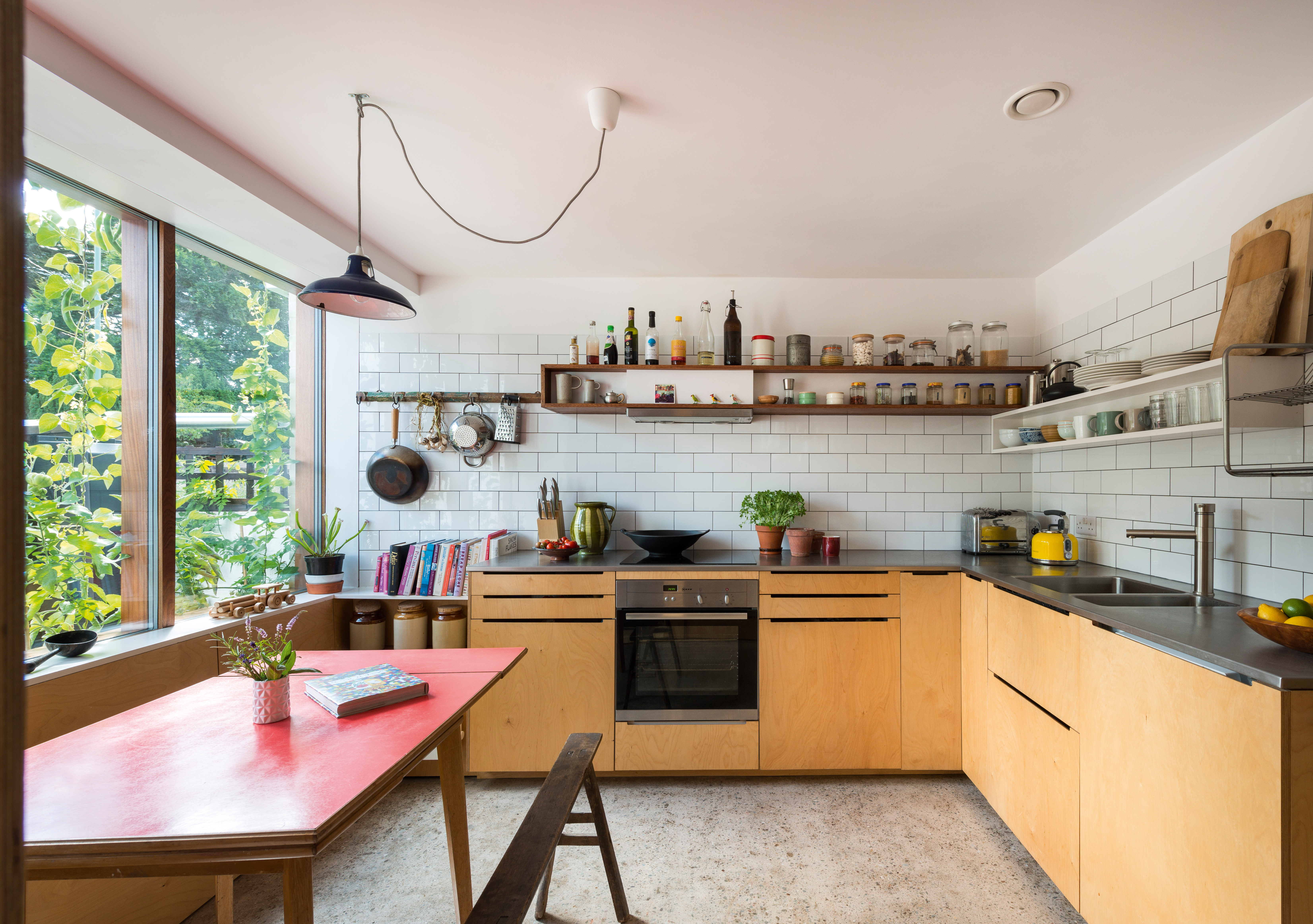
Concrete floors are very low-maintenance when it comes to cleaning: sweep away any mess then use a recommended cleaner and you're done. Most concrete floors only need mopping with a damp cloth, but some can also be steam-cleaned. You may also be required to apply a clear glaze, wax or sealant every now and again to protect the surface from minor scratches.
Check out our pick of the best steam cleaners and best steam mops so you can really easily keep your concrete floor clean.
FAQs
What does concrete flooring feel like underfoot?
That concrete flooring feels cold underfoot is often reported as its major drawback, and it is true that concrete does not retain heat, so when your house starts getting cold in winter, the floor will too.
However, concrete feels no colder underfoot than ceramic or stone, so it's more about where you choose to lay it. Radiant heat cables can be installed under concrete flooring to help retain more heat, and it's also compatible with underfloor heating, if you prefer warm floors.
Will a polished concrete floor be slippery?
The other concern raised about polished concrete floors in particular is that they'll be very slippery. The fact is, polished concrete is no more or less slippery than stone or tile, but – it does get very slippery when wet. For that reason, polished concrete shouldn't be used in bathrooms, and if it's used as kitchen flooring, then adequate measures to prevent it from getting slippery should be taken (e.g. mop up spills straight away),
Read more flooring know-how:
Anna is a professional writer with many years of experience. She has a passion for contemporary home decor and gardening. She covers a range of topics, from practical advice to interior and garden design.